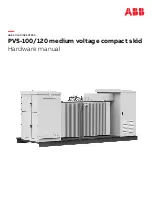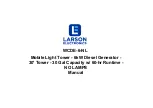
40
Current converter for field supply with 2-pulse half-controlled bridge circuit in a
B2Hz connection
The line connection is either single-phase or two-phase: e.g. 1AC230 V, 2AC400 V.
This is an asymmetrical half-controlled bridge circuit B2Hz.
In the 6RA80, this circuit is installed for the motor field supply.
The bridge circuit comprises two controlled valves (thyristors) and two uncontrolled valves
(diodes). By changing the firing angle, the firing instance of the thyristors, a positive variable
direct voltage from zero up to the maximum possible value is reached at the output of the
converter.
The field supply device is current controlled, i.e. the required field current is adjusted to the
constant value depending on the rated value p50102, irrespective of line fluctuations or
changes to the resistance of the field winding , the required voltage sets itself automatically
(no parameter input required for this).
In the case of nominal field voltages 3C/3D <=180 V, infeed via 3U1/3W1 with
1AC 230 V is recommended. Possible minimum value of the nominal voltage for the infeed is
50 V, see p50078[1] nominal value of line voltage for the field infeed.
2Q field infeed (option L11):
As an option for devices with an armature current from 60 A, a 2Q field feeding bridge is
possible in the B2C circuit. In this case, the power unit for the B2C circuit consists of
4 thyristors in place of 2 thyristors and 2 diodes for the B2Hz circuit.
Negative output voltages are possible through the 2Q circuit (Alpha W operation).
This negative output voltage can be used to reduce the current at a faster speed.
In the case of dynamic drives, this is necessary for fast current reduction when moving into
the field weakening range e.g. fast ramp-up time for rolling mill drives with field weakening.
Formulas:
Us: Line-to-line alternating voltage at the input
Ideal output direct voltage: Udi[V] = 0.9 Us[V]
Is[A] ~ Id[A], where Is: Input alternating current, Id: Output direct current
Valve current Iv[A] ~ 0.707 * Id;
Current load of diodes higher than thyristors because the diodes additionally carry the free-
wheeling current
Ud
Id
Us
Is
3U1 3W1
+ 3C
- 3D
Iv
Shunt for
Actual field current
value
Motor
field
Switching the diodes parallel to the
load produces a free-wheeling arm,
i.e. if an instantaneous value of the
output voltage greater than zero
occurs, a current flow builds up via
the load, if the output voltage is zero,
the current is reduced toward zero
via the free-wheeling arm.
















































